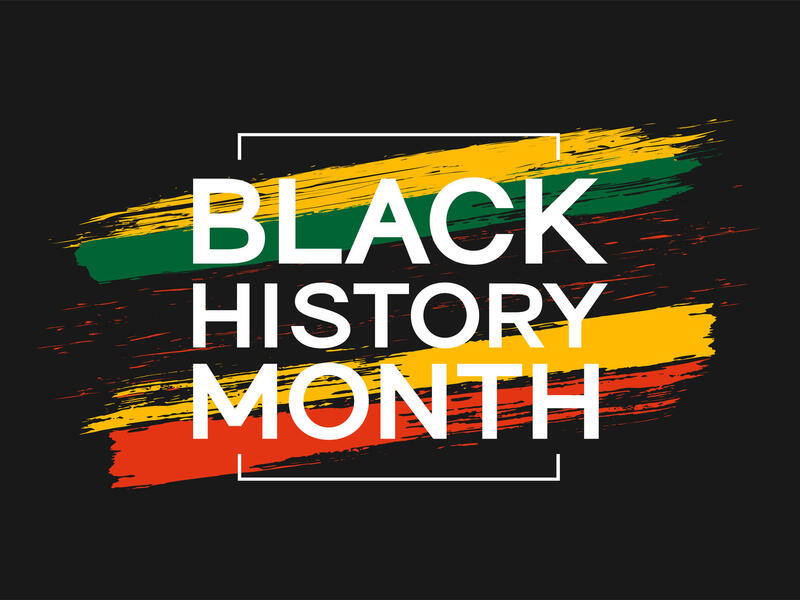
Feb. 6, 2025
Curator shares an inside look at the ongoing development of the Obama Presidential Center
Share this story
Crystal Moten, Ph.D., shared how a museum focused on the nation’s first Black president is taking shape in Chicago during the VCU Libraries’ annual Black History Month Lecture this week at the James Branch Cabell Library.
Moten is the inaugural curator of collections and exhibitions at the Obama Presidential Center, which will feature exhibits about President Barack Obama’s life and legacy when it opens in 2026. Moten’s Feb. 4 lecture, “Building a Home for Change: The Obama Presidential Center,” gave attendees a peek at the museum's design and some key pieces that will be in its exhibits. Moten is a public historian, curator and writer who focuses on the intersection of race, class and gender to uncover the hidden histories of Black people in the Midwest.
The 225-foot-tall museum will be the centerpiece of the Obama Center, but the campus will span 19 acres and include four buildings. In addition to the museum, it will have an auditorium, an athletic events building and a new Chicago Public Library. It will also feature trees and green spaces as well as a fruit and vegetable garden.
“When I think about the architecture of the museum building, I think about how President Obama, who considers himself an armchair architect, worked with world-renowned architects Tod Williams and Billie Tsien to design this campus that's integrated within the landscape of Jackson Park, a campus that includes the four buildings,” Moten said.
Moten told the story of the first time she saw Obama speak in person in 2007, during an event in Selma, Alabama commemorating “Bloody Sunday,” the March 7, 1965 event when Alabama Highway Patrol troopers attacked civil rights marchers outside Selma.
“I heard when President Obama said these words, ‘Don't tell me I do not have a claim on Selma, Alabama. Do not tell me I'm not coming home when I come to Selma, Alabama. I'm here because somebody marched for our freedom. I'm here because you all sacrificed for me. I stand on the shoulders of giants,’” Moten said.
After Obama’s speech, Moten encountered the future president.
“I had my camera and had a decision to make: Do I take a photo, or do I shake his hand?” Moten said. “I shook his hand. I didn't know at that moment that I was shaking the hand of the first African American president of this country. But what I did know is that his words moved me as a burgeoning historian.”
Obama returned to Selma in 2015 to speak on the 50th anniversary of Bloody Sunday. Moten said an excerpt from that speech will be carved into the side of the museum in development. The excerpt reads: “You are America. Unconstrained by habit and convention. Unencumbered by what is, ready to seize what ought to be. For everywhere in this country, there are first steps to be taken, there is new ground to cover, there are more bridges to be crossed. America is not the project of any one person. The single most powerful word in our democracy is the word ‘We.’ ‘We The People.’ ‘We Shall Overcome.’ ‘Yes We Can.’ That word is owned by no one. It belongs to everyone. Oh, what a glorious task we are given to continually try to improve this great nation of ours.”
Moten said the words would serve as “a beacon.”
“Their meaning speaks to the history, the courage, the determination, and the community power that those Selma foot soldiers demonstrated – the lessons from which we continue to learn,” Moten said.
The Obama Presidential Center’s presence in Chicago is notable, Moten said. It’s where Obama started his career and is the hometown of former first lady Michelle Obama.
“Chicago, for Barack Obama, is his chosen home, where he learned lessons in organizing and community building. The spoiler alert is that he wasn't always successful. We need to recognize that he's a very successful person, but he wasn't always successful, and that's important for us to understand, especially when we think about change,” Moten said. “When we think about committing to transformation and civic action and activism, it takes mistakes and failures, and President Obama's life story illustrates that.”
Exhibits in the museum will show all stages of Obama’s life: his beginnings, his initial failures, his family life and his time as president. Some of the pieces Moten highlighted in her lecture included a newspaper advertisement for Obama’s first job in Chicago, materials from his efforts encouraging Southside Chicago residents to vote as a community organizer, and materials from his presidential campaigns.
Subscribe to VCU News
Subscribe to VCU News at newsletter.vcu.edu and receive a selection of stories, videos, photos, news clips and event listings in your inbox.







